Firmware updates are essential for the performance and reliability of wireless lavalier microphone systems. This...
Battery Life and Charging Options in OEM Wireless Microphone Systems
In today’s fast-paced audio environments, battery life wireless mic performance is a top priority. Whether you're designing a rechargeable lavalier for content creators or developing a fully integrated charging case OEM system for broadcast professionals, power management defines product usability. Long-lasting batteries and flexible charging solutions aren’t just add-ons—they're essential features that impact workflow, productivity, and customer satisfaction.
OEM wireless mic manufacturers now focus on building smart, high-capacity systems that address modern user needs: faster charging, longer uptime, and greater sustainability.
Why Battery Life Is Crucial in Wireless Microphones
A wireless microphone is only as good as its power supply. Poor battery life wireless mic systems can interrupt performances, recording sessions, or live events—leading to frustration and lost opportunities.
Key Reasons Battery Life Matters:
Live Performances: Artists and presenters need continuous operation for hours.
Filming and Vlogging: Creators shoot all day and need a rechargeable lavalier that lasts.
Conferencing & Education: Multiple sessions require backup power or on-the-go charging.
Users today demand battery runtimes of 8–12 hours, and manufacturers must deliver without increasing mic size or weight.
Understanding Rechargeable Lavalier Technology
A rechargeable lavalier uses built-in lithium-ion or lithium-polymer batteries, offering many advantages over replaceable AA or AAA batteries.
Core Features of Rechargeable Mics:
Integrated USB-C or pogo-pin connectors.
Smart power management chips to avoid overheating.
LED indicators showing battery status.
Compared to disposables, rechargeable lavaliers offer:
Lower long-term costs.
Eco-friendliness with fewer battery disposals.
Easier power tracking via apps or indicators.
OEMs increasingly prioritize rechargeable lavalier designs for compact, stylish, and high-performance mic systems.
Standard vs. Extended Battery Life Models
There’s no one-size-fits-all approach to battery life wireless mic solutions.
Model Type | Battery Life | Typical Use |
Standard | 4–6 hours | Interviews, YouTube |
Extended | 10–15 hours | Events, live performances |
High-Capacity | 15–20+ hours | Multi-day filming, field use |
Choosing the right OEM battery model depends on your audience and application type.
Charging Case OEM Solutions for Wireless Mics
A key feature in OEM systems today is a charging case OEM unit—custom-designed to house and charge the mic and transmitter units simultaneously.
Advantages of a Charging Case:
All-in-one convenience – store, protect, and recharge.
Auto-charging – start charging the moment the mic is docked.
Multiple charges per case – up to 3–4 full charges from a single case battery.
As a factory, offering charging case OEM designs tailored to specific industries—vloggers, broadcasters, podcasters—can significantly enhance your product's value proposition.
USB-C, Docking Stations, and Smart Charging Systems
The wireless audio world is shifting to USB-C and pogo-pin charging interfaces for universal compatibility and faster charging.
Charging Options Available:
USB-C Direct: Most common; widely supported.
Docking Stations: Ideal for studios and teams.
Pogo Pins: Reliable and waterproof; often used in professional setups.
OEMs can combine these with smart charging chips that:
Detect power input type.
Regulate voltage and current.
Prevent overcharging or trickle charging at the right moment.
Comparing Disposable vs. Rechargeable Batteries
Factor | Disposable | Rechargeable |
Cost (Long-Term) | High | Low |
Environmental Impact | High waste | Eco-friendly |
Runtime | Shorter | Longer |
Portability | High | Requires charger |
OEM Preference | Declining | Strongly preferred |
Rechargeable lavalier models dominate today’s OEM market due to performance, reliability, and sustainability.
How Battery Design Affects Wireless Mic Size and Weight
Slimline mics are in demand. The challenge for OEMs is maximizing battery life wireless mic performance without increasing bulk.
Key Design Tips:
Use high-density Li-ion cells.
Design curved batteries to match mic contour.
Place battery inside transmitter body, not clip area.
Minimal weight improves usability for speakers, actors, or creators wearing the mic all day.
Fast Charging Technologies in Modern OEM Lavalier Systems
New fast charging protocols allow a rechargeable lavalier to reach 80% in under 30 minutes.
Technologies Used:
PD (Power Delivery) via USB-C
Quick Charge 3.0
Custom OEM fast-charge circuits
Ideal for mobile creators who need a top-up before the next shoot.
Case Study: OEM Charging Systems for 3 Use Scenarios
1. Broadcast Industry
Need: All-day shooting
Solution: Charging case OEM with 4 full cycles per case
Battery: 1200mAh with 12-hour runtime
2. Vlogging/YouTube
Need: Lightweight with rapid charging
Solution: USB-C powered rechargeable lavalier
Battery: 800mAh, fast charge in 30 mins
3. Education
Need: Multiple units charging overnight
Solution: Docking station OEM for 8 units
Battery: 1000mAh, 10 hours runtime
Troubleshooting Common Battery-Related Issues
Problem | Cause | Fix |
Sudden shutdown | Overheating or low battery | Use battery with thermal control |
Slow charging | Faulty cable or charger | Use OEM-approved adapters |
Dropouts during use | Poor battery contact | Check internal wiring or pogo pin alignment |
OEMs should implement real-time monitoring to reduce user complaints.
Smart Battery Monitoring and Status Indicators
Today's mics often include:
OLED screens showing runtime.
App-based monitoring for mobile-friendly control.
Multicolor LEDs for fast status recognition.
These features not only improve usability—they reduce support tickets post-sale.
OEM Customization Options for Battery and Charging
Custom mic solutions can include:
Magnetic charging connectors
Solar-assisted battery tops (for outdoor creators)
Waterproof battery seals for action shooting
Interchangeable battery modules
Adding a unique charging case OEM design can offer extra branding power for your clients.
Global Compliance for Rechargeable Mic Batteries
When shipping internationally, mic batteries must meet certifications:
Certification | Region/Requirement |
CE | EU compliance |
RoHS | Environmental standard |
UN38.3 | Air shipment of lithium batteries |
As a professional wireless microphone OEM, ensuring compliance is key to successful global distribution.
Frequently Asked Questions (FAQs)
1. How long does a rechargeable lavalier mic battery last per charge?
Most offer 6–12 hours, depending on capacity and mic power draw.
2. Can I replace the internal battery of a wireless mic?
Only some models allow this. OEMs can offer modular battery packs if needed.
3. What’s better—charging case or USB-C?
USB-C is easier for individuals; charging case OEM units are better for multi-mic management.
4. Are fast-charging lavalier mics safe?
Yes, if built with smart IC protection and tested to international standards.
5. How do I know when the mic is fully charged?
Look for solid LED indicators or screen icons. Apps also notify you in real-time.
6. Can I customize charging cases as part of an OEM order?
Absolutely. You can specify size, color, ports, LED style, and even branding.
Conclusion
Whether you’re creating a content-friendly rechargeable lavalier, or developing a broadcast-ready charging case OEM system, efficient power design is critical. Investing in long-lasting batteries, user-friendly charging ports, and fast-charging features makes your battery life wireless mic offering stand out in a crowded market. As demand grows for smart, sustainable audio tools, your wireless mic solution should reflect both innovation and reliability.
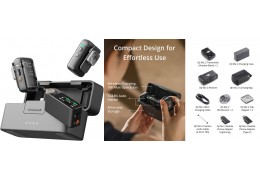
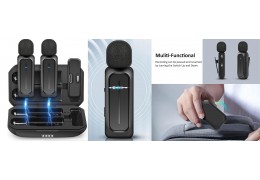
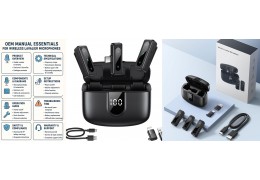

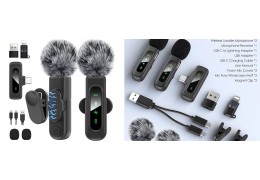

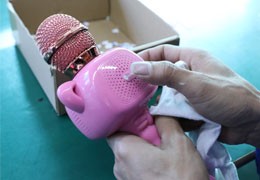
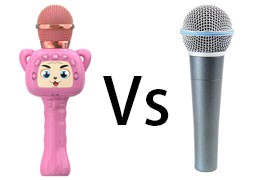



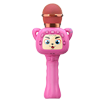

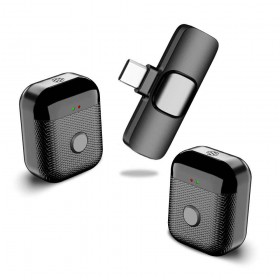
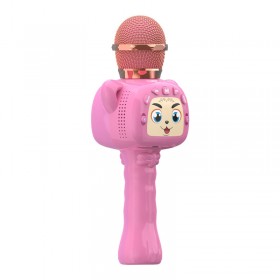
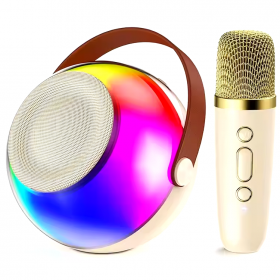
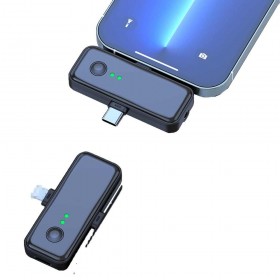
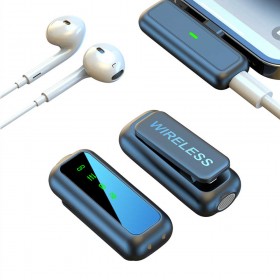
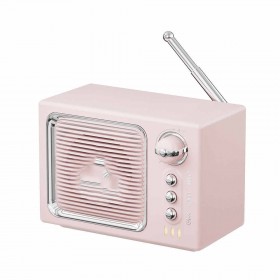

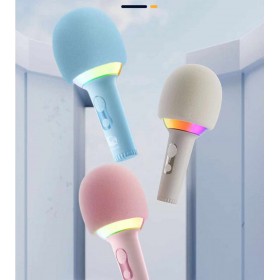
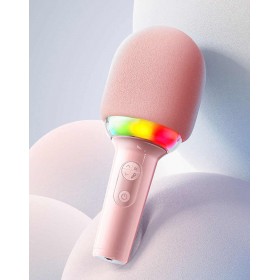
Latest comments